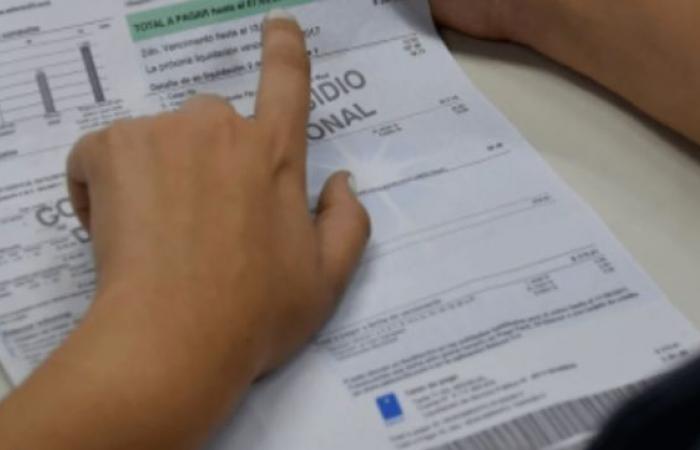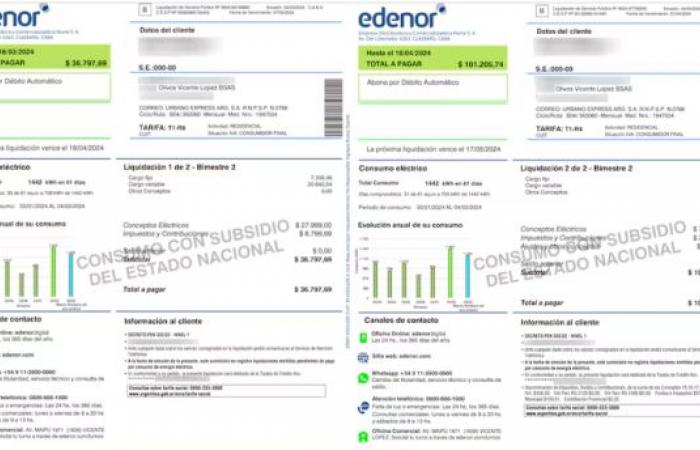The removal of subsidies for electricity and gas generated great concern among users, due to the high increase that is already reflected in the bills that are reaching homes. Find out in this note what requirements must be met to maintain the benefits.
In the month of May, the Government reported that depending on the current segmentation scheme, the three residential categories into which the INDEC divides households with respect to the Total Basic Basket (CBT), new increases would be applied and a new lower consumption limit, clarifying that if the limits were exceeded people would pay more.
It is worth remembering that when the announcement was made it was reported that high-income users (N1) would be the ones who would pay the most for consumption and those with low income (N2) and medium income (N3) would have “bonuses on their rates” but with a consumption limit.
Now, June has arrived, The latest official data indicates that the number of high-income users (N1) is 5.3 million, low-income users (N2) are 8 million and middle-income users (N3) are 2.7 million.
However, although the removal of subsidies continues, the National Government continues to maintain the registration in force to request the maintenance of subsidies for electricity and natural gas.
Who can register for subsidies?
All citizens can complete the procedure, which includes those who receive a retirement, pension or are beneficiaries of social programs such as the Universal Child Allowance, Progresar and Potenciar Trabajo.
If the person is a tenant, they can also register to obtain the subsidy, the difference is that they will be considered a user of the services.
On the other hand, if the owner has more than one electricity or gas service in their name, they will only be able to complete the service data for a single address.
How to register to receive electricity and gas subsidies?
Those interested should enter www.argentina.gob.ar/subsidios and the page will redirect them to the RASE forms.
In order to register, you must have the following documents on hand:
– Meter number and Customer/Service/Account/Contract or NIS number that are on the electricity and natural gas network bill.
– The last copy of the DNI.
– The CUIL number of each member of the household over 18 years of age.
– The out-of-pocket income of each household member over 18 years of age.
– An e-mail address.
– If a community dining room or picnic area registered with Renacom operates at the service address, you must have the registration number on hand.
What is household segmentation like?
The current scheme is organized into three levels: high income (N1), low income (N2) and medium income (N3). Each group is distinguished depending on their financial situation and what they declare as material possessions.
Segment (N1):
– Total monthly household income equivalent to or greater than $2,898,553 (3.5 basic baskets for a type 2 household according to Indec).
– Have 3 or more vehicles less than 5 years old.
– Have 3 or more properties.
– Own a boat, an aircraft or be the owner of corporate assets that demonstrate full economic capacity.
Segment (N3):
– Total monthly income between $828,158 and $2,898,553 (between 1 and 3.5 basic baskets for a type 2 household according to Indec).
Exception: households with a cohabitant with a Single Certificate of Disability (CUD), the total monthly income to be part of this segment can vary between $1,242,237.29 and $2,898,553.67 (between 1.5 and 3.5 basic baskets for a type 2 home according to Indec).
– Own up to 2 properties.
– Own up to 1 vehicle less than 3 years old.
Exception: Households with a cohabitant with a Single Certificate of Disability (CUD) can own up to 1 vehicle less than 3 years old to be part of the segment
Segment (N2):
– Net income less than $828,158.19 (1 total basic basket for a type 2 household according to Indec).
Exception: For households with a cohabitant with a Single Certificate of Disability (CUD), the total monthly income to be part of this segment must be less than $1,242,237.29 (1.5 basic baskets for a type 2 household according to Indec).
– Own up to 1 property.
– Not own 1 vehicle less than 3 years old.
Exception: Households with a cohabitant with a Single Certificate of Disability (CUD) can own up to 1 vehicle less than 3 years old to be part of the segment
Here, households will be included that, in addition to not meeting the conditions to be part of the highest income segment, have:
– A member with a Housing Certificate issued by ReNaBaP.
– A member of the household has a Lifetime Pension for South Atlantic War Veterans.
– A member with a Unique Disability Certificate (CUD).
– Address where a community feeder or picnic area registered with Renacom operates.
Fountain: Infobae







